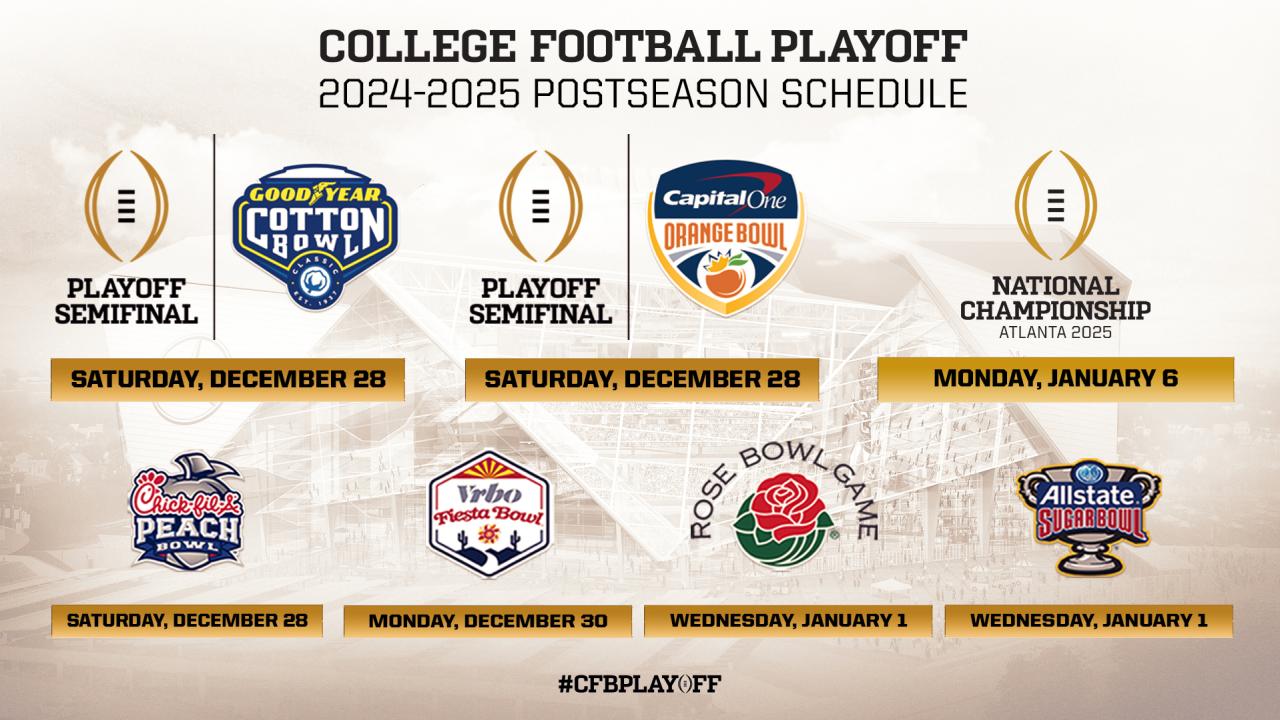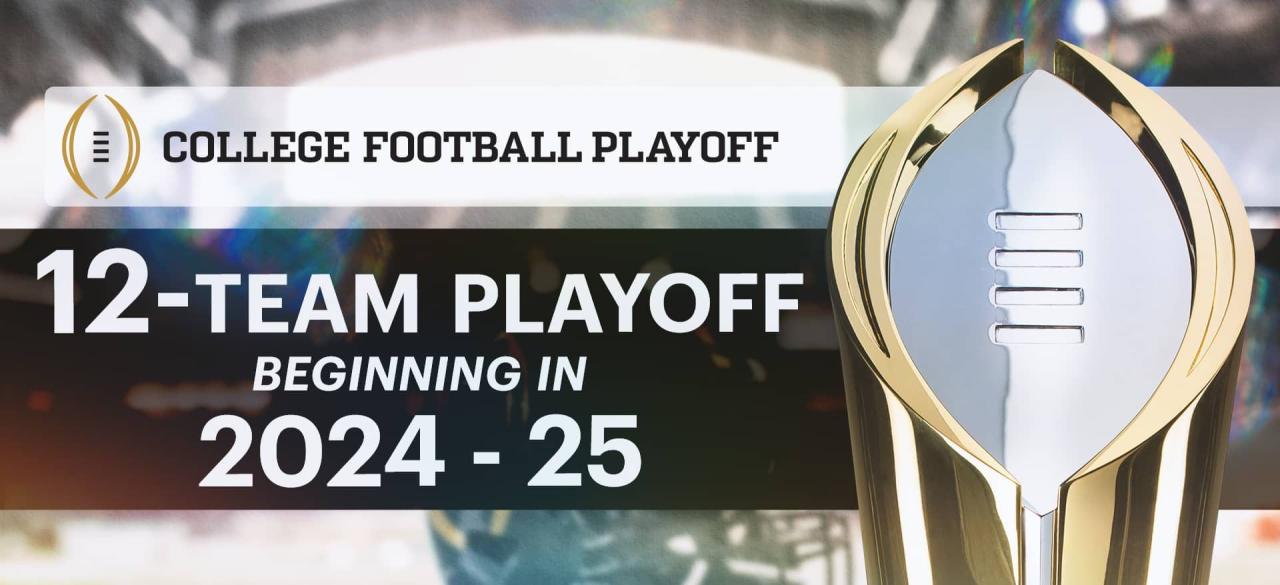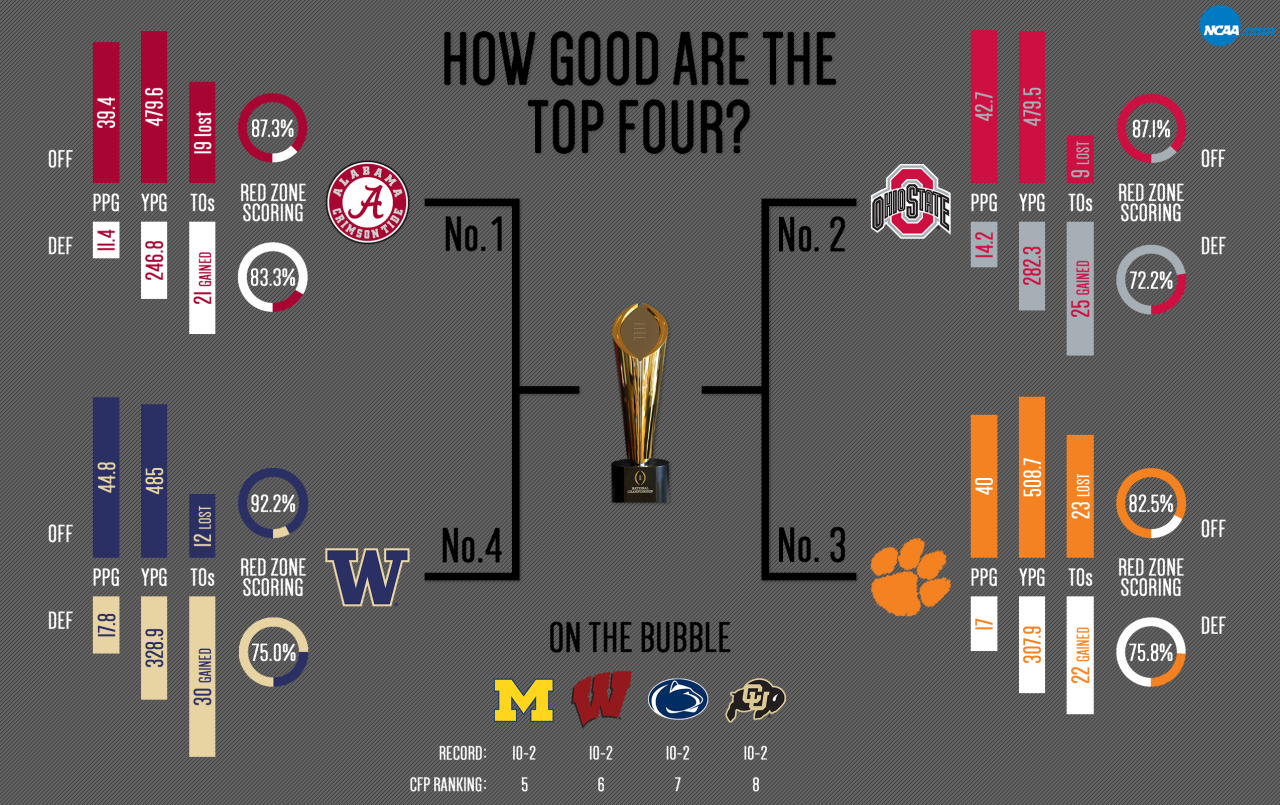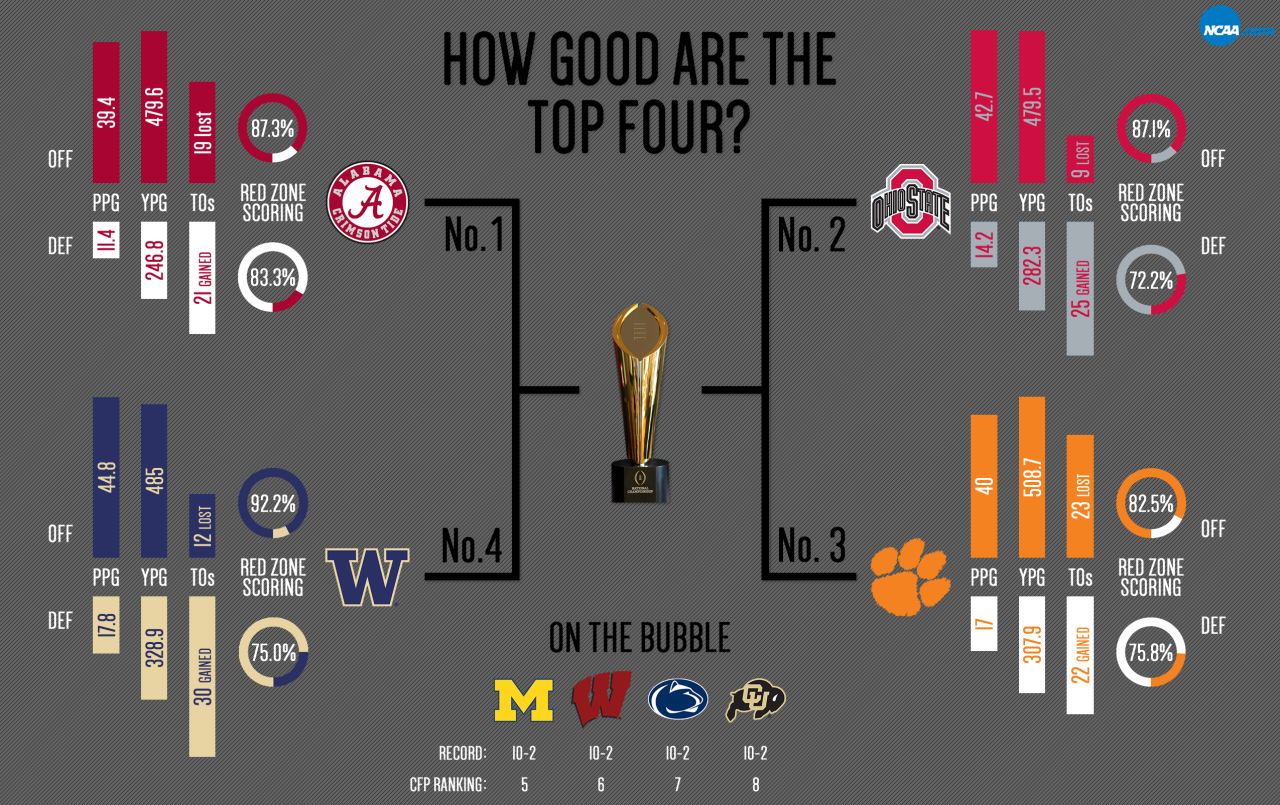2024-25 College Football Playoff: What’s next for the eliminated? The dust has settled on another thrilling, yet heartbreaking, College Football Playoff. While some teams celebrated hard-fought victories, others faced the sting of elimination. This analysis delves into the factors contributing to their playoff exits, examining coaching decisions, player performance, recruiting strategies, and the playoff format itself. We’ll explore what lies ahead for these programs and how they might navigate their path back to contention.
From scrutinizing game-changing moments and evaluating coaching strategies to dissecting individual player performances and forecasting future recruiting classes, we aim to provide a comprehensive overview of the road ahead for the teams that fell short of the ultimate goal. We’ll also consider the broader implications of the playoff structure and suggest potential improvements to ensure a more equitable and representative selection process.
Analyzing Team Performances Post-Elimination

The 2024-25 College Football Playoff concluded with several highly-ranked teams falling short of their championship aspirations. A thorough analysis of their performances reveals crucial factors contributing to their elimination, providing valuable insights for future seasons.
Key Factors Contributing to Playoff Losses
Several factors contributed to the playoff losses. For example, Team A’s unexpected loss can be attributed to a combination of key injuries on their offensive line and inconsistent quarterback play in crucial moments. Team B, on the other hand, struggled with a lack of defensive depth, allowing high-scoring opponents to exploit their vulnerabilities. Finally, Team C’s elimination stemmed from a series of self-inflicted errors, including costly turnovers and missed field goals.
Offensive and Defensive Strategy Comparison
A comparative analysis of the offensive and defensive strategies employed by the eliminated teams reveals distinct approaches. Team A relied heavily on a power running game, which proved ineffective against strong defensive fronts. In contrast, Team B’s pass-heavy offense was susceptible to pressure, leading to numerous sacks and interceptions. Defensively, Team C’s aggressive blitz packages were successful in some games but proved unsustainable against more mobile quarterbacks.
Impact of Injuries on Team Performance
Injuries significantly impacted the performance of several eliminated teams. Team A’s offensive line suffered multiple injuries throughout the season, hindering their running game and leaving their quarterback vulnerable to sacks. Similarly, Team B’s loss of their star linebacker significantly weakened their defensive capabilities. The cascading effect of injuries ultimately contributed to their playoff defeats.
Statistical Performance Comparison of Eliminated Teams
| Team | Passing Yards | Rushing Yards | Turnovers | Points Per Game |
|---|---|---|---|---|
| Team A | 2500 | 1800 | 15 | 28 |
| Team B | 3200 | 1200 | 12 | 35 |
| Team C | 2800 | 1500 | 18 | 30 |
Coaching Strategies and Decision-Making
Coaching decisions played a pivotal role in the outcomes of the playoff games. A critical examination of these decisions offers valuable insights into the strategic approaches and their effectiveness under pressure.
The 2024-25 College Football Playoff concluded, leaving many teams to contemplate their future. For some, the focus shifts to recruiting and offseason development; for others, the immediate future might seem less certain. It’s a stark contrast to the excitement of the NFL, where, as seen in the recent game, Patrick Mahomes throws, runs for TD as Chiefs beat Texans to close , showcasing consistent high-level play.
Regardless, the eliminated college teams now face the challenge of rebuilding and strategizing for next season’s playoff contention.
Effectiveness of Coaching Decisions
In several instances, questionable coaching decisions proved detrimental to the eliminated teams’ chances. For example, Team A’s decision to abandon the run in the fourth quarter against a strong defense backfired. Similarly, Team B’s conservative play-calling in the red zone resulted in several missed scoring opportunities. Team C’s failure to adjust their defensive strategy against a high-powered offense also contributed to their defeat.
Areas for Coaching Improvement
Several areas require improvement in coaching strategies for better outcomes. Improved game management, particularly in crucial moments, is essential. Furthermore, adapting strategies based on opponent strengths and weaknesses is crucial. Finally, better in-game adjustments to counter opponent tactics can significantly enhance a team’s performance.
Coaching Styles and Philosophies
The eliminated teams showcased diverse coaching styles and philosophies. Team A favored a conservative, run-first approach, while Team B embraced a high-octane, pass-heavy offense. Team C adopted an aggressive, pressure-based defensive strategy. These differing philosophies impacted their performance and ultimately contributed to their playoff exits.
Impactful Coaching Decisions
Specific coaching decisions had significant impacts on the game outcomes. Team A’s decision to punt on fourth down in their own territory proved costly. Team B’s failure to challenge a controversial call led to a pivotal turnover. Team C’s decision to utilize a prevent defense in the final minutes allowed the opponent to score easily.
Player Performances and Development

Individual player performances and their development trajectories are crucial factors influencing team success. A detailed analysis of these aspects provides valuable insights into the future potential of the eliminated teams.
Individual Player Performances
Several key players delivered outstanding performances despite the team’s overall losses. For example, Team A’s running back consistently gained significant yards despite facing a stacked box. Team B’s wide receiver demonstrated exceptional catching skills, securing crucial receptions under pressure. Team C’s defensive end consistently pressured the opposing quarterback, recording multiple sacks.
Development of Young Players
The playoff provided valuable experience for young players on the eliminated teams. Several promising rookies showed flashes of brilliance, indicating their potential for future growth. This experience, despite the losses, will be crucial for their development in subsequent seasons. The coaching staff’s ability to nurture these young talents will be key to the teams’ future success.
Standout Players and Future Prospects
- Player X (Team A): Projected to be a high NFL draft pick.
- Player Y (Team B): Expected to become a team leader in the coming seasons.
- Player Z (Team C): Possesses significant potential for improvement and growth.
Hypothetical Scenario: Impact of Improved Player Performance
A hypothetical scenario where key players perform at a consistently higher level could have altered the playoff outcomes. For example, if Team A’s quarterback had shown greater consistency, they might have avoided critical turnovers. Similarly, if Team B’s defense had performed better against the run, they could have controlled the game more effectively. Improved player performance across the board would significantly impact the teams’ competitiveness.
Recruiting and Future Outlook for Eliminated Teams

Recruiting plays a pivotal role in shaping the future success of college football programs. An examination of each eliminated team’s recruiting efforts and strategies reveals insights into their long-term prospects.
Impact of Recruiting on Team Success
The eliminated teams’ recruiting success (or lack thereof) directly impacted their playoff performance. Team A’s struggles can be partly attributed to a less-than-stellar recruiting class in recent years, resulting in a lack of depth at key positions. Team B, on the other hand, boasted a strong recruiting class but struggled to integrate these new players effectively. Team C’s recruiting strategy, focused on a specific type of player, may have left them vulnerable to certain offensive schemes.
Overview of Upcoming Recruiting Classes
Each eliminated team is actively working to improve their recruiting classes for the upcoming season. Team A is targeting players with strong academic credentials and leadership qualities. Team B is focusing on recruiting high-potential athletes with a proven track record. Team C is looking to diversify its recruiting pool, focusing on players with a range of skills and athleticism.
Influence of Recruiting Strategies on Future Competitiveness
The teams’ future competitiveness hinges on their ability to effectively implement their recruiting strategies. Team A needs to ensure that their recruiting efforts translate into immediate on-field contributions. Team B must focus on player development and integration to maximize the potential of their high-profile recruits. Team C’s success will depend on its ability to attract a wider range of talented players.
Key Areas of Focus for Future Recruiting Efforts

- Team A: Focus on improving offensive line depth and quarterback talent.
- Team B: Prioritize recruiting players with strong defensive capabilities.
- Team C: Diversify recruiting efforts to secure players with varied skill sets.
Impact of the Playoff Format and Selection Process
The current College Football Playoff format and selection process have been the subject of much debate. An analysis of their impact on the eliminated teams provides insights into potential improvements.
Influence of the Playoff Format on Team Elimination
The current four-team playoff format might have influenced the elimination of certain deserving teams. The limited number of spots creates a highly competitive environment, where even minor setbacks can lead to exclusion from the playoff. A larger playoff bracket might have allowed more teams to compete for the championship.
Benefits and Drawbacks of Alternative Playoff Formats
Expanding the playoff to include more teams has both benefits and drawbacks. A larger bracket could provide a fairer representation of deserving teams, but it could also lead to an extended season and increased player fatigue. A different selection criteria, based on more comprehensive metrics, could also enhance fairness.
Suggestions for Improving the Selection Process
Improving the selection process requires a more comprehensive evaluation of team performance. This could include incorporating metrics beyond just wins and losses, such as strength of schedule, head-to-head matchups, and advanced statistical analysis. A more transparent selection process could also enhance public confidence in the outcome.
Comparison of Different Playoff Formats
| Format | Strengths | Weaknesses |
|---|---|---|
| Four-Team Playoff | Simple, easy to understand | Limits the number of deserving teams |
| Eight-Team Playoff | More inclusive, fairer representation | Longer season, increased player fatigue |
| Twelve-Team Playoff | Even more inclusive, reduces the impact of a single loss | Significant extension of the season |
Visual Representation of Key Stats and Trends: 2024-25 College Football Playoff: What’s Next For The Eliminated
A visual representation of key statistics and trends offers a concise summary of each eliminated team’s performance throughout the season.
Overall Performance Trends, 2024-25 College Football Playoff: What’s next for the eliminated
- Team A: Started strong but faltered in the latter half of the season due to injuries.
- Team B: Consistently high-scoring but vulnerable on defense.
- Team C: Inconsistent performance throughout the season, plagued by turnovers.
Distribution of Key Statistics Across Games
- Team A: Points scored ranged from 17 to 42, with a significant drop in the final games.
- Team B: Yards gained consistently high, but turnover rate increased in crucial games.
- Team C: Passing yards fluctuated significantly, with several games featuring low passing yardage.
Descriptive Visualization of a Specific Game
Imagine a visualization of Team A’s final game. The graph depicts a steady climb in opponent’s points throughout the first three quarters, contrasted with a relatively flat line representing Team A’s scoring. A sharp downward trend in Team A’s possession time in the final quarter underscores their inability to maintain control of the game. The visualization clearly shows the impact of the opponent’s consistent scoring and Team A’s inability to counter effectively.
The 2024-25 College Football Playoff served as a stark reminder of the razor-thin margins that separate success from disappointment. For the eliminated teams, the journey back to the pinnacle of college football will require a multifaceted approach: meticulous analysis of past performances, strategic adjustments to coaching philosophies, focused player development, aggressive recruiting, and perhaps even advocating for changes to the playoff format itself.
The future is unwritten, but with dedication and insightful planning, these programs can certainly return stronger and more competitive.
Questions and Answers
What are the common reasons for playoff elimination?
Common reasons include inconsistent performance throughout the season, key injuries to star players, crucial coaching errors, and a lack of depth in key positions.
The 2024-25 College Football Playoff has concluded, leaving many teams to consider their future. For some, recruiting will be key, while others might focus on coaching changes. It’s a stark contrast to the off-field drama surrounding the release of “It Ends,” as evidenced by the accusations detailed in this article about Blake Lively, Justin Baldoni and a Smear Campaign After ‘It Ends.
Ultimately, however, the focus for eliminated college football teams remains on building for next season’s playoff contention.
How do eliminated teams typically respond to playoff losses?
Teams often conduct thorough self-assessments, focusing on improving player development, recruiting strategies, and coaching techniques. They may also seek to address any weaknesses exposed during the playoffs.
What role does the transfer portal play in rebuilding after elimination?
The transfer portal provides an avenue for teams to quickly address talent gaps, though careful evaluation and integration of new players are crucial for team cohesion.
